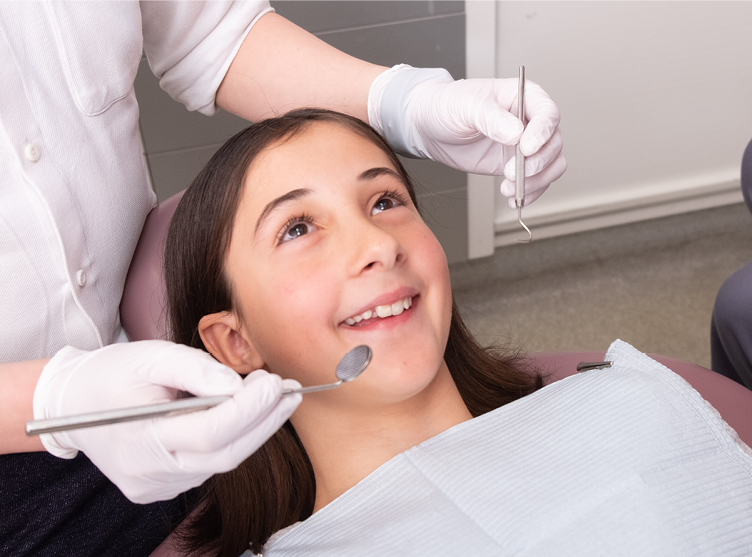The Basic Principles Of Legacy Orthodontics
Table of ContentsSome Ideas on Legacy Orthodontics You Should KnowThe Legacy Orthodontics IdeasLegacy Orthodontics - QuestionsThe Legacy Orthodontics IdeasThe Ultimate Guide To Legacy Orthodontics
At Advanced Orthodontics, we offer people with a holistic treatment experience. On top of that, we supply flexible treatment schedules, adaptable repayment choices and a fun, pleasurable experience. leesburg braces. Phone call ( 480) 357-4900 today to learn more and routine an appointment.An orthodontist is a dental professional trained to identify, protect against, and deal with teeth and jaw irregularities. They correct existing problems and are trained to recognize issues that may develop in the future. Orthodontists function with people of every ages, from children to grownups. People often connect a perfect smile with healthiness.
Malocclusion, or misaligned teeth, can lead to oral issues, consisting of dental caries, gum disease, and challenging or unpleasant eating. But not everybody is birthed with straight teeth. If you have a negative bite or large spaces in between your teeth, you might desire to consult a dental practitioner focusing on orthodontic treatment.
The 7-Minute Rule for Legacy Orthodontics
( Photo Credit Report: DigitalVision/Getty Images) Orthodontists utilize taken care of and detachable oral tools, like dental braces, retainers, and bands, to transform the placement of teeth in your mouth. Orthodontic therapy is for oral irregularities, including: Misaligned teethBite issues, like an overbite or an underbiteCrowded teeth or teeth that are too far apartJaw misalignmentThe objective of orthodontic therapy is to enhance your bite.
A healthy and balanced bite guarantees you can consume, eat, and talk effectively. While you might assume of orthodontists as mostly for children or teenagers that require dental braces, they can correct oral problems at any kind of age. Orthodontists participate in university, dental institution, and orthodontic institution. After graduation, they spend 2 or 3 years in an orthodontic residency program.
All orthodontists are dentists, yet not all dental practitioners are orthodontists. Orthodontic residency programs supply extensive, focused instruction for oral professionals. They concentrate on two locations: Just how to effectively and safely move teeth Just how to effectively assist advancement in the teeth, jaw, and faceOnce an orthodontist has finished training, they have the choice to become board certified.
How Legacy Orthodontics can Save You Time, Stress, and Money.
Misalignment, or malocclusion, is the most usual reason individuals see an orthodontist. It is hereditary and is the outcome of size differences in between the top and lower jaw or in between the jaw and teeth. Malocclusion results in tooth congestion, an irregular jaw, or uneven bite patterns. Malocclusion is normally treated with: Your orthodontist affixes metal, ceramic, or plastic square bonds to your teeth.
Some people need a headwear to help move teeth into line with pressure from outside the mouth. A retainer is a personalized gadget that keeps your teeth in location.
They're frequently made use of on children. They can create additional area in the mouth without having to draw teeth. If you have a significant underbite or overbite, you might need orthognathic surgical treatment (additionally called orthodontic surgery) to lengthen or shorten your jaw. Orthodontists utilize cables, medical screws, or plates to support your jaw bone.
You may need to see an orthodontist if you have: Crowding or otherwise sufficient room for all of your teethOverbite, when your upper teeth come over your bottom teethUnderbite, when your bottom teeth are too far forwardSpacing or issues with gapsCrossbite, which is when your top teeth fit behind your base teeth when your mouth is closedOpen bite or an upright void in between your front bottom and upper teethMisplaced midline, when the center of your bottom and top teeth do not align Correcting a dental malocclusion can: Make attacking, eating, and talking easierImprove the symmetry of our face and your overall appearanceEase discomfort from temporomandibular joint problemsDifferent your teeth and make them less complicated to cleanse, assisting stop dental cavity or dental caries It's often a dental practitioner that first notices misaligned teeth throughout a routine test.
Legacy Orthodontics - The Facts

During your very first orthodontic consultation, you'll likely have: A dental examPhotos taken of your face and smileDental X-raysPanoramic (360 degree) X-rays of your face and headImpressions to develop mold and mildews of your teethThese examinations will help your orthodontist know just how to continue with your therapy. leesburg clear braces. An orthodontist is a dental practitioner that's had training to treat your teeth and jaw
An orthodontist is concentrated on your bite, so something like a broken tooth would certainly be dealt with by a dental expert. Orthodontists are concentrated on your bite, or the method your teeth fit together, and the straightness of your teeth.
Ever before asked yourself exactly how celebrities constantly appear to have completely lined up teeth? The find here solution frequently lies in the skilled hands of an orthodontist. Yet what exactly does an orthodontist do? Orthodontists are oral specialists that focus on correcting irregularities in the teeth and jaws. Their know-how goes beyond just creating a stunning smile; it includes boosting your overall oral health and wellness and feature.
Some Of Legacy Orthodontics

While braces are the most generally identified orthodontic therapy, orthodontists have a varied toolkit at their disposal. The details approach chosen depends upon the extent of the situation, the client's age, and specific preferences. These reliable dental braces use a system of brackets bonded to the teeth and attached by wires.
These detachable trays are tailor-made to gradually shift the teeth's setting. In cases of narrow jaws, palatal expanders can be used to create room for appropriate tooth alignment.